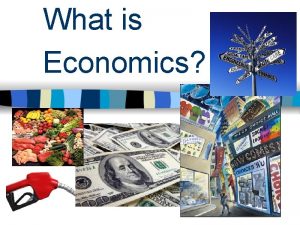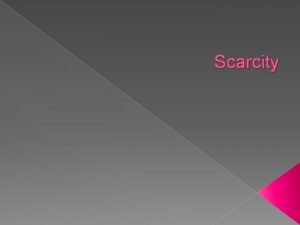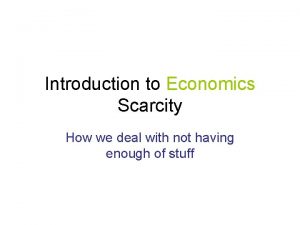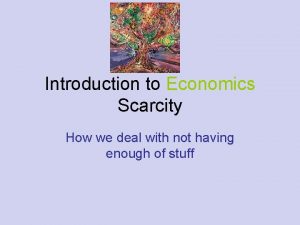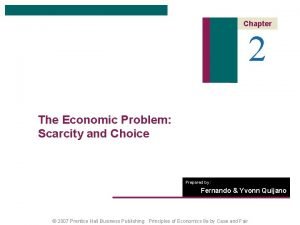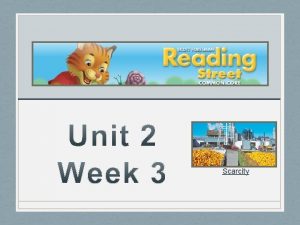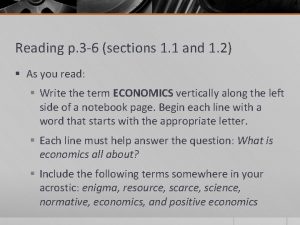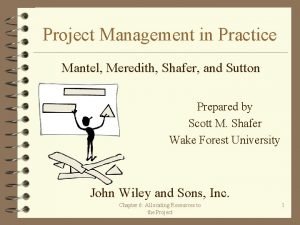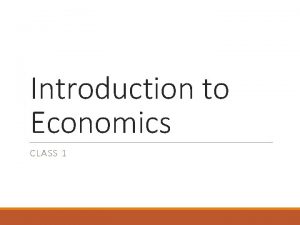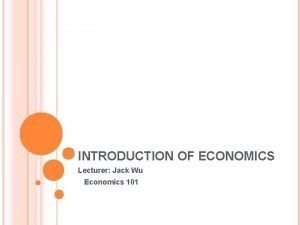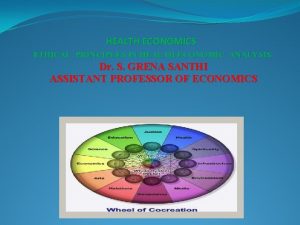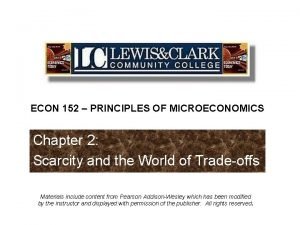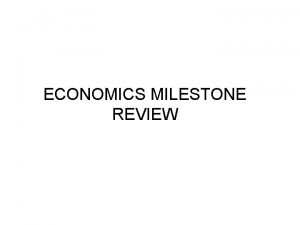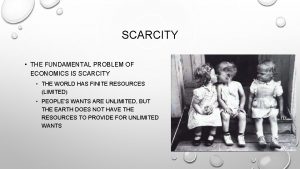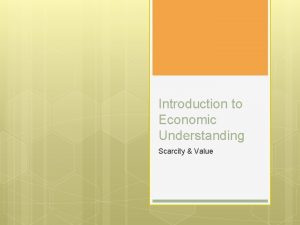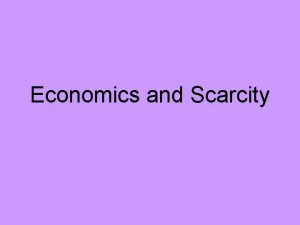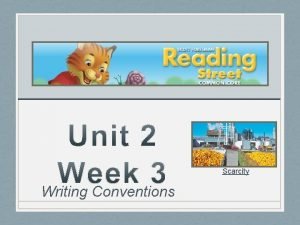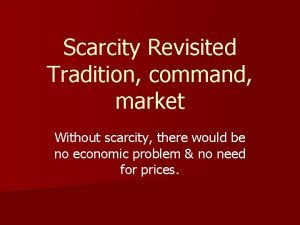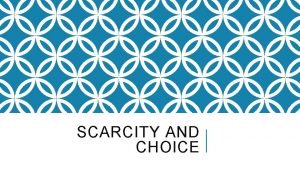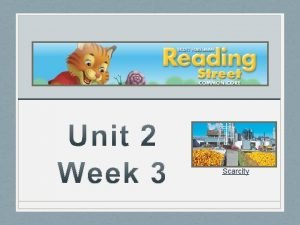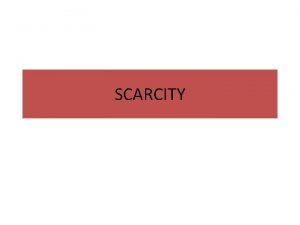Introduction to Economics CLASS 1 Scarcity Economics is



















- Slides: 19

Introduction to Economics CLASS 1

Scarcity Economics is the study of how society manages its scarce resources. “Scarcity – since there are limited resources all of societies needs cannot be produced” ◦ Even Rich Countries have scarcity issues. Time is the scarcity, and it's the commodity we can't create any more of. Jim Mitchell

Factors that changed the world we live in Democracy The Limited Liability Company Patent Rights Literacy and Education is the most powerful weapon which you can use to change the world. Nelson Mandela

The factors of production Land – Natural resources Labor – the mental and physical skills of individuals in society Capital – tools that are used in production. Economics answers the following 3 questions ◦ What to produce? ◦ How to produce? ◦ For whom to produce?

Macroeconomics vs Microeconomics is a branch that studies how individuals, households and firms make decisions to allocate scarce resources. Macroeconomics is a branch of economics that deal with the performance, structure, and behavior of national and regional economies as a whole. Economics is extremely useful as a form of employment for economists. John Kenneth Galbraith

Ceteris paribus Is Latin for “all other things held constant” In constructive models, economists make assumptions to eliminate unnecessary details to reduce the complexity of behaviour.

Positive vs normative economics Positive economics ◦ Descriptive statements, claims how the world is. (Scientists) Normative economics ◦ Prescriptive statements claims how the world ought to be. (Policy Advisors)

Forces at play in the real world. Economic – Supply and Demand Social – Religion and Culture Political – Governments.

10 principals of economics Principal 1 – People Face Trade Offs Efficiency – Getting the maximum benefit of scarce resources Equality – Benefits are distributed equally amongst the population. A family is a risky venture, because the greater the love, the greater the loss. . . That's the trade-off. But I'll take it all. Brad Pitt

2: the cost of something is what you gave up to get it. Opportunity Cost – The next best alternative that is given up when you choose something. In economics, one of the most important concepts is 'opportunity cost' the idea that once you spend your money on something, you can't spend it again on something else. Malcolm Turnbull

3: Rational people think on the margin. Rational people – people who systematically and purposefully do the best they can do to achieve their objectives. Marginal changes – small incremental adjustments to a plan of action. Marginal Benefit > Marginal Cost = decision will be made.

4: People respond to incentives. Incentive – something that induces people to act. Unintended consequences. Call it what you will, incentives are what get people to work harder. Nikita Khrushchev

5: Trade can make everyone better Country X produces 10 apples and has $100 Country Y produces 10 oranges and has $100 Both apples and oranges cost $10 each Country X wants 3 oranges Country Y wants 7 apples. Everyone benefits with trade.

6: Markets are usually a good way to organize economic activity. Market economy ◦ Competitive market Command economy ◦ Soviet style economics ◦ Government decides what/how/to whom

7: Governments can sometimes improve market outcomes. Market failure – a situation in which a market left to its own fails to allocate resources efficiently. Government's first duty is to protect the people, not run their lives. Ronald Reagan

8: a country’s standard of living depends on its ability to produce goods and services. Productivity: the quantity of goods and services produced by each output of labor. The only way to increase the standard of living is through increasing productivity. The productivity of work is not the responsibility of the worker but of the manager. Peter Drucker On my desk I have three screens, synchronized to form a single desktop. I can drag items from one screen to the next. Once you have that large display area, you'll never go back, because it has a direct impact on productivity. Bill Gates

9: Prices rise when the government prints too much money. Inflation: An increase in the overall levels of prices in the economy. Inflation is when you pay fifteen dollars for the ten-dollar haircut you used to get for five dollars when you had hair. Sam Ewing

10: society faces a short run trade off between unemployment and inflation. Inflation occurs when the government prints money. When money is created there is a need to spend it which thereby increase demand. Higher demand means that firms can charge more, and in the short run encourages firms to higher more employees. More hiring = lower unemployment.

Thank you See you next week!
 Opportunity cost
Opportunity cost Scarcity definition economics
Scarcity definition economics Concept of opportunity cost
Concept of opportunity cost Causes of scarcity
Causes of scarcity Scarcity lesson plan
Scarcity lesson plan Trade off and opportunity cost
Trade off and opportunity cost Causes of scarcity
Causes of scarcity Chapter 2 the economic problem: scarcity and choice
Chapter 2 the economic problem: scarcity and choice Scarcity, choice and opportunity cost example
Scarcity, choice and opportunity cost example Scarcity
Scarcity Scarcity forces tradeoffs
Scarcity forces tradeoffs Entrepreneurship 3209
Entrepreneurship 3209 Resources scarcity
Resources scarcity Resources scarcity
Resources scarcity Resources scarcity
Resources scarcity Resources scarcity
Resources scarcity Resources scarcity
Resources scarcity Resources scarcity
Resources scarcity Scarcity
Scarcity Mixed economy political cartoon
Mixed economy political cartoon



